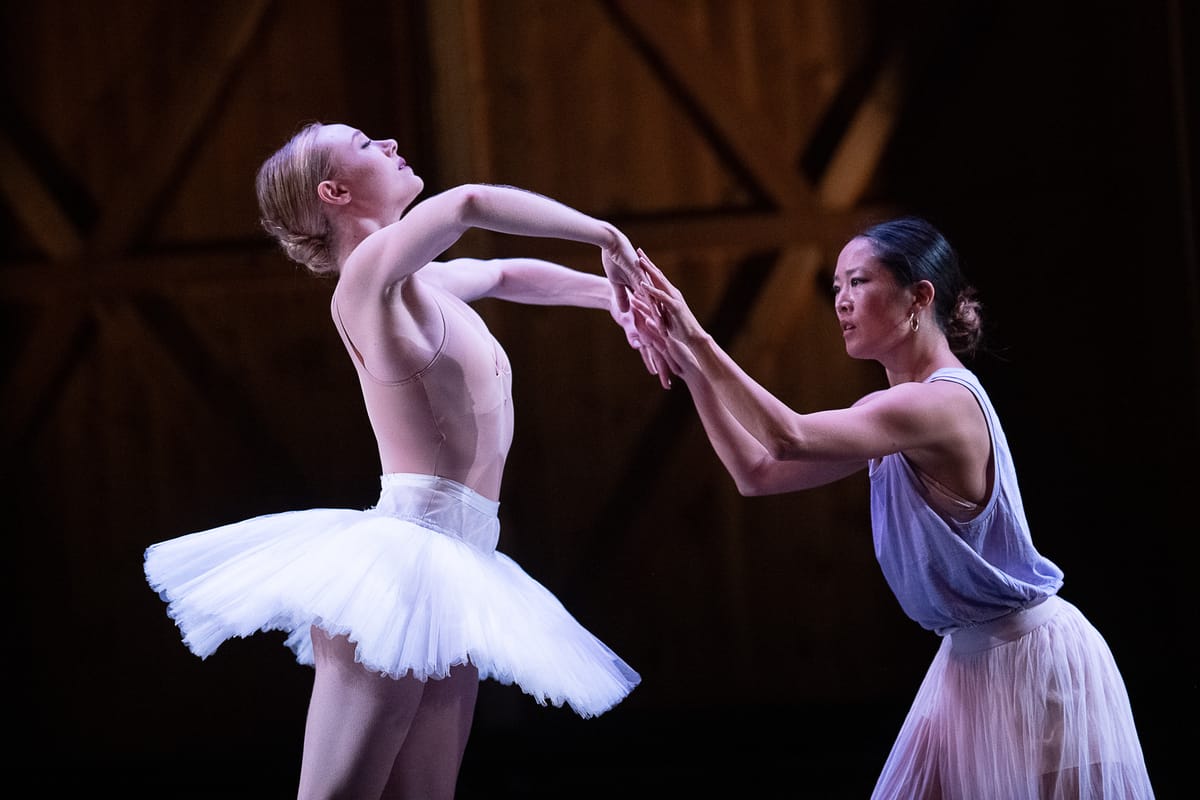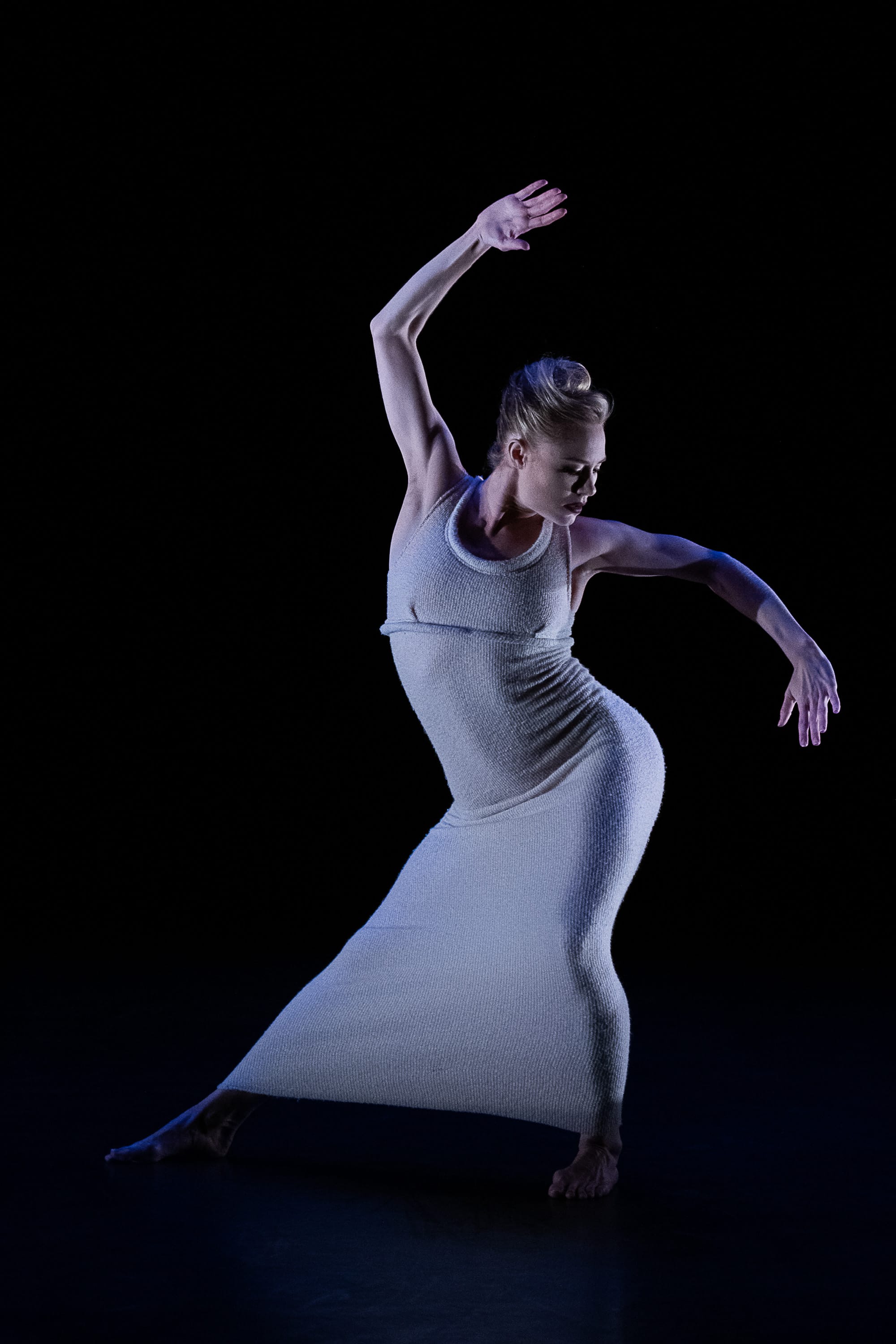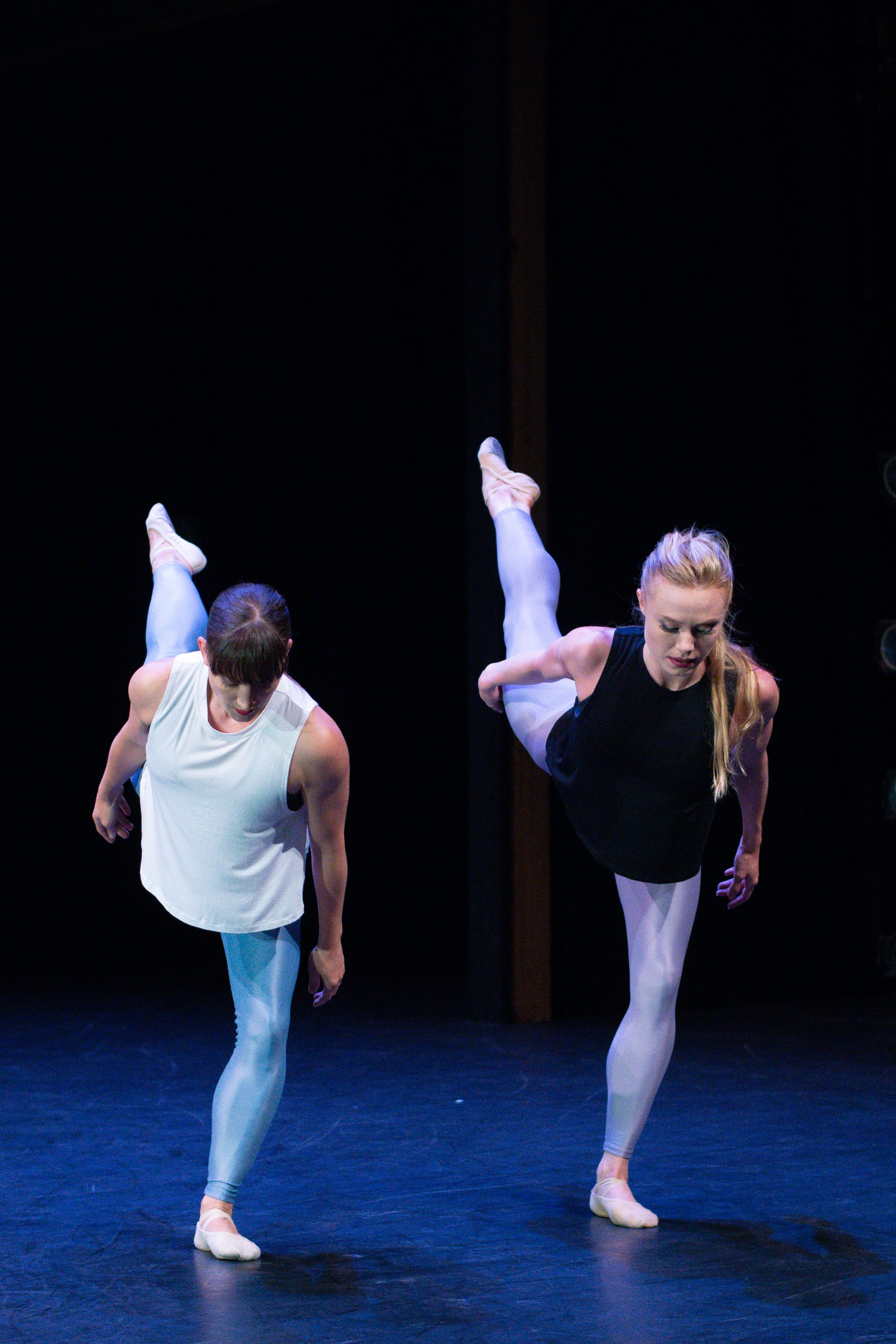Sara Mearns at Jacob’s Pillow

“Sara Mearns: Beyond Ballet”
Jacob’s Pillow Dance Festival
Becket, MA
August 17, 2019
Sara Mearns is a dancer of power and range, so it is not surprising that she might want to join the burgeoning number of ballerinas who have sought to explore the challenges of genres outside their own. Mearns, a principal with New York City Ballet, appeared last week at Jacob’s Pillow in a production entitled “Sara Mearns: Beyond Ballet,” and in it she applied herself to new dance forms with the seriousness and focus one would expect from this exceptional dancer. She danced in works by five choreographers, and was accompanied by three different partners during the course of the performance. What made her show unusual was that all her partners, and all but one of the choreographers, were women.
In keeping with the production’s title, Mearns’s choreographers were all from the world of modern or contemporary dance: Martha Graham, Liz Gerring, Christopher Williams, Jodi Melnick, and Company Wang Ramirez. All but the last are well-established names in American dance. The exception to the Americans was the French-based hip-hop Company Wang Ramirez directed by Honji Wang, a German Korean dancer, and Sébastien Ramirez, French-born of Spanish heritage.
The Wang Ramirez “No. 1,” a Pillow commission, may have been Mearns’ most adventurous choice. It was also the only piece in which she wore pointe shoes and a traditional ballerina tutu. In other words, she appeared as a ballerina in partnership with Wang, dressed in a diaphanous skirt and sneakers, who maintained her own hip-hop inflected style. However, the dance wasn’t just about a juxtaposition of genres.
The duet started with a film of Wang and Mearns dancing together in the same costumes worn at the Pillow, as if the film were a rehearsal for what was to be continued on stage. As the live performance starts, Wang is alone and seems to be marking a dance. She then tries out some ballet turnout at a barre that rolls into the space. She forces her legs into a fifth position and other balletic moves, which always morph into the punches and squiggles of her own movement vocabulary. Meanwhile Mearns appears and also engages in some barre exercises. As the barre rolls away the two begin a duet, each dancing in her own medium.
It soon becomes apparent that Wang is the stronger partner. At several points Wang supports Mearns and moves her around. Wang pushes and pokes her with her hands, and although Mearns responds, her response is weak. There is also an erotic element to the dance as Wang runs her hand down Mearns’ leg, or places a hand over her breast. All of this is subsumed within Wang’s very active vocabulary, some hip-hop, some martial arts, that keeps the dance from becoming an obvious assault. Ultimately, though the duet produces a strange atmosphere that points out the manipulated character of a ballet duet, its sexual nature, and the passivity of the woman in what is traditionally a male/female dance. I suspect that such a point could only be made with women partners. In any case, here it managed to be both understated and unsettling.

The program opened with Graham’s 1933 lost solo, “Ekstasis” reimagined by former Graham principal, Virginie Mécène. Mécène, of course, can imagine the dance any way she wishes since it doesn’t exist in its original form, but what we saw of Mearns seemed to have little to do with Graham, with the exception of the floor-length, tubular gown, which made up her costume. Graham’s movement, especially in the 1930s, was so angular one critic compared her to a cube. Mearns couldn’t be angular if her life depended on it. She is all curves, including her hyperextended limbs. She bends, she is pliant, even in the most virtuosic moments of a dance. This may have been why the solo Mécène fashioned for her looked far closer to art nouveau serpentine than art deco geometry.
Liz Gerring’s ”Duet,” which Mearns danced with her NYCB colleague, Ashley Bouder, and Jodi Melnick’s “Opulence into part 2,” which Mearns and Melnick performed together, made an interesting pairing. Gerring created “Duet” for Bouder and Mearns several years ago for another occasion. The dance, set to a score by Michael J. Schumacher, is Cunninghamesque in feeling, having an upright posture, straightforward action, a good deal of ballet steps, and few transitions. The women wore soft ballet slippers, rather than being barefoot, which is more common in contemporary dance, and they were dressed in shiny tights and opaque tops by Carbon 38.

Gerring has the dancers working first on opposite sides of the stage, each appearing initially in arabesque. They go on to execute unrelated movement, but then suddenly coalesce into the same steps and gestures. Throughout the dance, disparity moves into synchronicity just when it seems needed. Because the duet was made for two ballet dancers, and the vocabulary incorporates a number of ballet steps such as arabesque, passé and grand battement, the women looked comfortable and at ease. They didn’t make eye contact until near the end of the dance, and when they did, they were smiling.
Melnick and Mearns have been working together informally since 2015, when Mearns asked Melnick if she could explore Melnick’s movement lexicon without any anticipation of a formal dance coming out of it. “Opulence into part 2,” a world premiere, is the result of this long period of exploration.
The dance begins in darkness with the sound of plastic sheeting being dragged about the stage. As the lights go up, the barn doors that are part of the back of the stage are exposed with a single band of bright light running across the center of them. Melnick is seen folding up a large, heavy sheet into a far corner of the stage. She is joined by Mearns, both dressed in sneakers and blue jumpsuits, like working men’s overalls. There is a sound score by Tei Blow that includes a good deal of talking. It seems we are hearing a group of musicians trying to get the amplified sound balanced for a performance. Melnick’s movement vocabulary is loose and informal. It swings and dips, the head may roll, the shoulders sway. The demands here are quite different than in the Gerring work, where movement is more precisely structured and controlled, at least in how it looks. One can see why Mearns wanted to work in Melnick’s idiom. It is the opposite of ballet’s formality. This doesn’t mean it isn’t precise, but the body posture is more relaxed, the movement more casual. There is something about the performer, too, that marks Melnick’s work. In Brian Schaefer’s notes on the Pillow performances, he quoted Mearns as saying that Melnick told her, “When you walk on stage you don’t have to be bigger than you are. Who you are is enough.” That is a very different approach from what we normally see in a ballet performance, and Mearns adopted it, looking youthful and fresh, and with none of the grandeur she usually projects. It should be added that Mearns and Melnick are not altogether alone in the dance. At the end, six Pillow staff members and interns dash on and execute a bit of Melnick movement of their own, making a light-hearted finale and perhaps accounting for the “part 2” of the work’s title.
It is certainly understandable why Mearns might want to investigate what Melnick has to offer, and we do feel in her attitude that she is simply dancing and not trying to take on any persona not completely her own. But when you see the two women dance together (and this may be part of the point), it becomes apparent how thoroughly Mearns’s body has been inhabited by ballet training. What may seem a natural gesture to Mearns has been so completely schooled that balletic movement has become a second nature. There is no action left that hasn’t been colonized. So what for Melnick is a casual walk or lift of the arm is, in Mearns, thoroughly sculpted and recreated. It can’t be undone. The personal aspects of Mearns’s dance, and there are many, are those that grow out of years of a specific bodily endeavor.
That may be why she looked particularly at home in Christopher Williams’s solo from the “Daphnis & Chloé” ballet he is currently in the midst of conjuring. One wonders what Williams, always an innovative choreographer, is up to with this work, and I look forward to seeing the completed ballet. Williams made the dance for Mearns (will she star in his ballet?), and although not done on pointe, it is a free flowing ballet dance, full of swirling drapery. There is a famous photograph of Margot Fonteyn in a scene from Frederick Ashton’s “Daphnis and Chloé,” where, her hands bound and outstretched, she pleads with the pirate king to release her from captivity. Williams includes many such pleading gestures in this solo, although the dancer’s hands are not tied. Williams has given Mearns’s plush and flexible movement full play, and she looked delicious.
Mearns has said she hopes her explorations of different forms of dance will inform her work with New York City Ballet, where she tends to be pegged into specific kinds of roles. It has happened with other dancers, like Megan Fairchild, who returned to NYCB from Broadway with new confidence. Mearns has never lacked confidence, but her pursuit of new kinds of dance may well make an impact on how she looks and acts once she is back on home ground.
copyright © 2019 by Gay Morris



